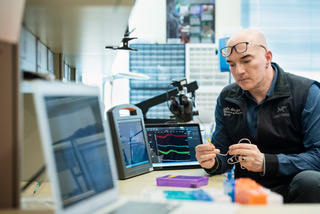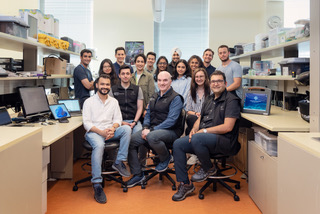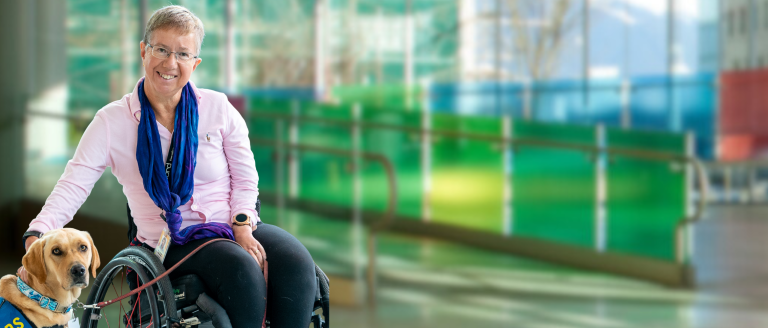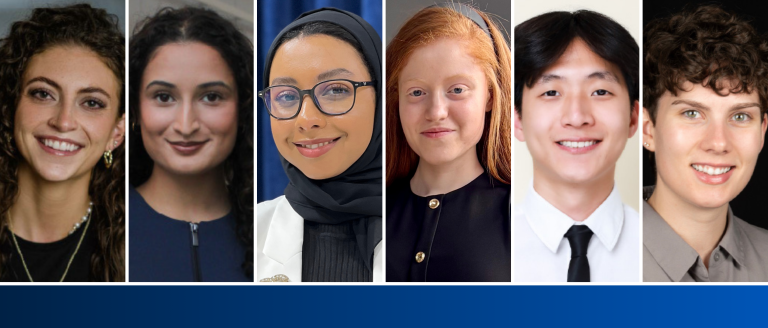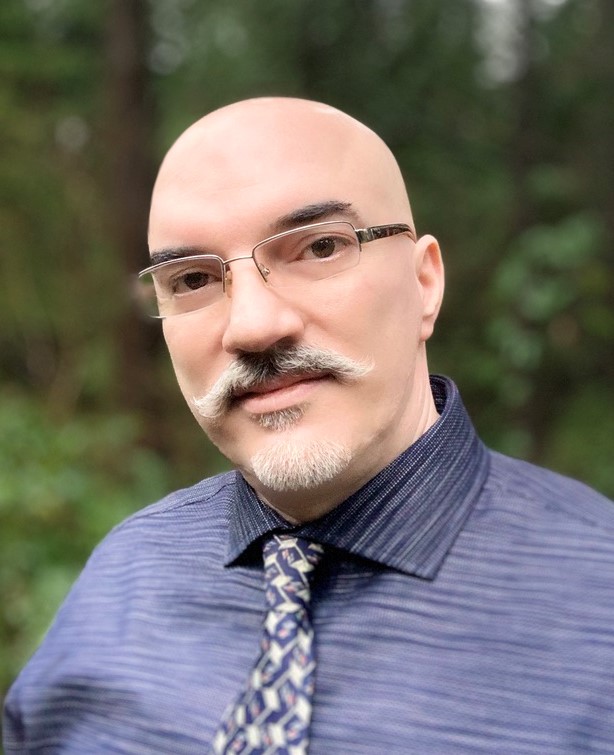
BABAK SHADGAN
ASSISTANT PROFESSOR
Division:
Orthopaedic Research
Site:
Vancouver – Blusson Spinal Cord Centre
Dr. Babak Shadgan is a Michael Smith Foundation for Health Research (MSFHR) Scholar, an Assistant Professor in the Department of Orthopaedics at the University of British Columbia (UBC), a faculty member at the UBC School of Biomedical Engineering, and a principal investigator at the International Collaboration on Repair Discoveries (ICORD), where he is directing the Clinical Biophotonics Laboratory.
Can you share a little bit about your educational background and journey, and how you got to where you are today?
I am a sports physician who has worked with elite athletes since 2001. In 2002, I joined the Medical Commission of the International Federation of Olympic Styles Wrestling (FILA – later rebranded to UWW) and have been the official doctor of wrestling competitions ever since.
During the 2004 Athens Olympic Games, one of the Olympian wrestlers – a gold medalist in the 2000 Sydney Olympic Games – failed to continue wrestling and had to drop out of the competition due to disabling and progressive leg pain – a condition called “exercise-induced leg pain syndrome.” Treating this condition requires identifying the exact etiology and confirming the diagnosis. A common etiology of this syndrome in athletes is “Chronic Exertional Compartment Syndrome (CECS)” of the leg. The standard method for diagnosing CECS involves an invasive procedure for dynamic measuring the pressure within the leg compartments during an activity or exercise protocol; a high-risk, painful, and challenging intervention for patients, particularly elite athletes. That experience inspired me to investigate a potentially noninvasive method for diagnosing CECS that is accurate and simple. My studies led me to apply a noninvasive optical technique based on near-infrared spectroscopy (NIRS) to measure intra-compartmental tissue oxygenation instead of intra-compartmental pressure directly.
After many years of medical practice, I turned to clinical research by embarking on a PhD study to investigate the use of NIRS for early diagnosis of compartment syndrome at the University of British Columbia (UBC) in 2006. That was the starting point of my journey from sports medicine practice to clinical biophotonics research and development. In 2018, after obtaining a Scholar Award from the Michael Smith Foundation for Health Research, I was appointed as an Assistant Professor at the UBC Department of Orthopaedics and a Principal Investigator at ICORD.
What inspired you to work in orthopaedics, specifically research?
I am have been particularly interested in innovative research and development since medical school. When I was a medical intern, I designed orthopaedic supports and braces. Among these designs was a new design for reducing pain and discomfort in lateral epicondylitis (tennis elbow), which gained success and was adopted by a medical company in 1992. I completed my general medicine training by defending my thesis titled “epidemiologic study of adult intertrochanteric fracture of the hip” in 1994.
My interest in orthopaedic research and innovation continued for years until I specialized in Sports Medicine and engaged in sports-related orthopaedic projects, particularly exertional compartment syndrome research. Starting my PhD program at UBC inspired my path as a clinical researcher interested in novel applications of optics and photonics in orthopaedic research and practice.
What impact would you like to see your work have on patients, communities and society at large?
My research is focused on the design and development of novel biosensing techniques. The ability to monitor the physiology, metabolism, and function of internal organs for early diagnosis of pathological processes is a significant need in modern medicine. Over the last 20 years, clinical interests and the need to continuously monitor tissue and organ physiology and function have fostered breakthrough innovations in continuous biosensing technologies. Consequently, related fields such as wearable and implantable biosensors and imaging modalities are active components of today’s health and clinical care.
By providing critical information and continuous tracking at the bedside, these diagnostic and monitoring interventions can improve treatment outcomes while reducing healthcare complexity, the potential for errors, and costs; this is what I ultimately hope to achieve with my own research. Under artificial intelligence, when paired with a continuous treatment or targeted drug delivery, an implantable biosensor can establish an intelligent closed-loop system to overcome unsolved clinical challenges. Examples from my research are the implantable spinal cord optical sensor that guides clinicians to optimize adequate perfusion to the injured tissue in acute spinal cord injuries and a wearable sensor to monitor transplanted free flaps’ vitality in reconstructive surgery. I hope to see my research contribute to such innovations, promoting the best possible patient care and reducing the burden of illness in a multitude of patient populations, particularly improving outcomes in trauma patients, organ transplants, and tissue regeneration medicine.
As a sports physician, my involvement in Olympic wrestling styles over the last 20 years has led to some fundamental changes in wrestling regulations in favor of athletes’ health. For example, in 2015, following a serious neck injury during the European Wrestling Championships, we changed the neck-lock technique in wrestling, which has reduced the incidence of spine injuries in wrestling since then. As the head of the International Wrestling Federation Medical Commission, I will continue my efforts to prevent and reduce sports injuries and improve the wellness of wrestlers worldwide; this is an ongoing impact I want to have on the sporting world as a physician.
What excites you most about your work? What are you most proud of?
Innovation is the most exciting aspect of my work. Designing novel medical devices and applications in orthopaedic surgery and sports medicine is what continuously motivates me. Among the work that I’ve done, I’m most proud of developing an implantable optical sensor and a new method for monitoring spinal cord hemodynamics in acute spinal cord injury patients for the first time. In collaboration with Professor Brian Kwon, we developed a new approach to optimizing hemodynamic management in acute spinal cord injuries using our NIRS-based miniaturized sensor to improve patient outcomes. After six years of preclinical research and development, we are now ready to implant the first sensor on a patient. This is a very exciting moment at this point in my research career.
On a different note, while on a flight from Amsterdam to Vancouver in 2012, I performed CPR and saved a life. That was one of my proudest achievements as a physician.
What is one piece of advice that you would give to current trainees?
Set exciting but attainable goals in your practice, do not be afraid to learn from your mistakes along the way, and stay focused on doing your best to achieve those goals no matter how long it may take.
When you’re not working, where can we find you?
If I am not travelling, you can usually find me in one of three places: the Lab in my home’s basement, designing or fixing sensors; my living room, doing calligraphy or watching movies; or in my friend’s basement, playing table tennis.
